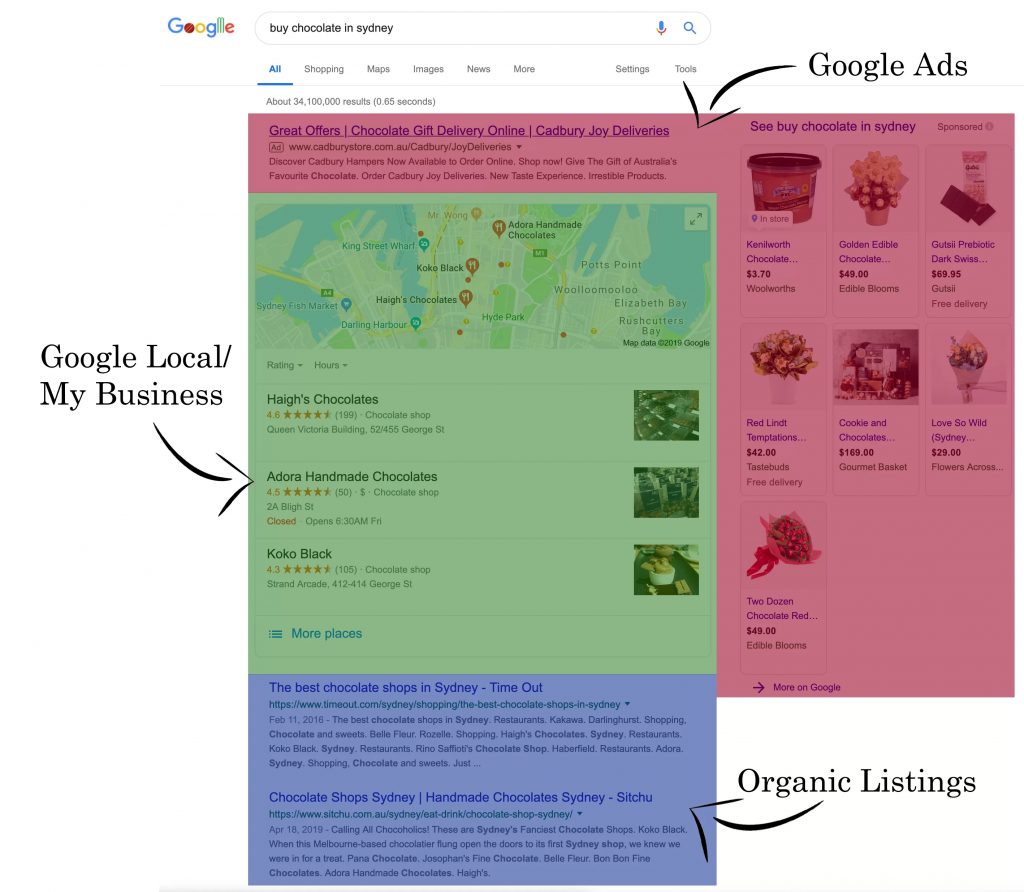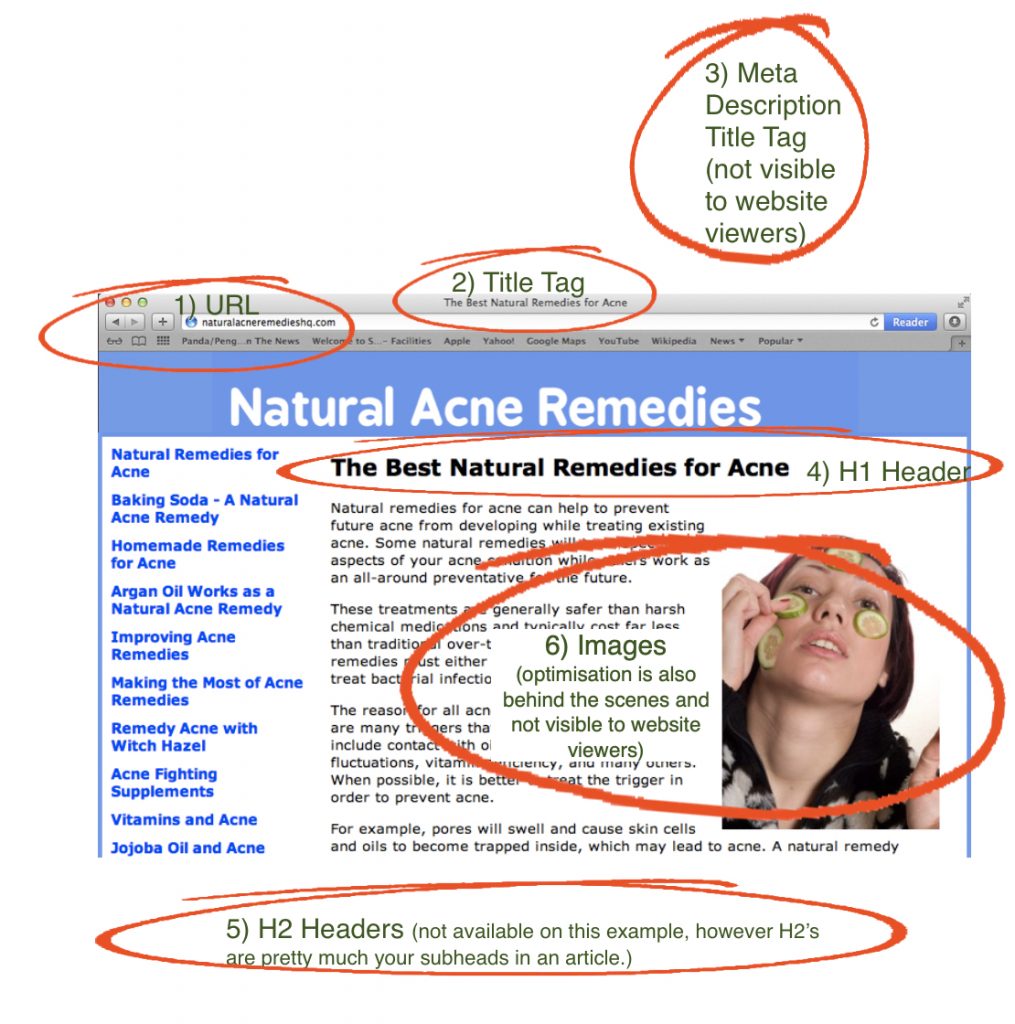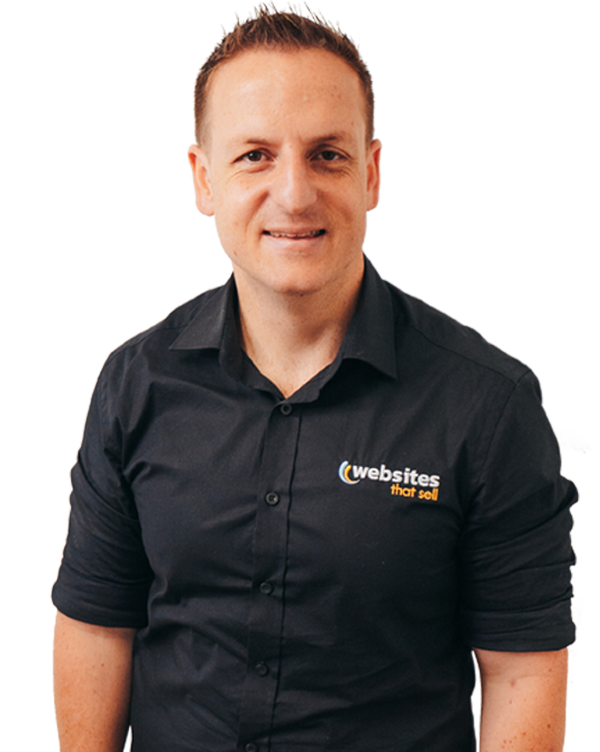Are you confused about SEO like Michael in the video above? If so, then this page will once and for all explain what SEO actually is.
Most people associate Search Engine Optimisation (SEO) only with ranking on Google. The fact is, though, it's so much more…
Here's how Wikipedia puts it:

This definition is pretty good - but more than likely, this jargon probably left you even more confused… and still without a clue about what on earth SEO actually is.
Right?
That's why this guide will break everything down for you in simple, easy-to-understand terms. It will outline the basics of what SEO is and how it works and then give you a next-level understanding of the full SEO picture.
For all the naysayers out there saying this is not a complete guide and we've left out some serious technical aspects of SEO, here's the disclaimer:
DISCLAIMER: This guide is intended for business owners who want to know what SEO is and have it explained in layman's terms to help you make an educated decision about its use as a marketing/advertising strategy in their business. The purpose isn't to break down every technical element of SEO (which will only confuse further) but rather to outline the basics to make an educated buying decision.
Furthermore, in the spirit of keeping things simple, this guide will focus on Google for illustrations, however, the interpretation of concepts should also be applied to Bing, Yahoo, and every other search engine and not be neglected in an SEO strategy.
So, without any further ado, let's begin.
The Basics Of SEO
Often, when people call the Websites That Sell Office and ask about SEO services, we have to start at the beginning.
And that is the first page of Google.
How it's set up and how/where SEO will help drive traffic vs. Google Ads.
So let's start there also.
Google's Front Page Explained

Google Ads: this area is allocated for the Google Ads Program. By participating in the Google ads program you can get your website featured in this area instantly. You pay for the ad space, and your website shows up on the first page. You stop paying - you stop showing up. In the most simple terms, that's how it works.
Google Local/My Business: This area is allocated for local business listings. Google pulls the most relevant listings from Google My Business to display in this area. Local SEO strategies will help you rank in this area.
Organic Listings: This area (results 1-10) is allocated for organic listings. Google displays the most relevant and authoritative results to this section's search phrase. SEO strategies will help you rank in this area.
SEO drives traffic to your website by ranking in the Google Local & Organic Listings.
What Kind Of Phrases (keywords) Should Your Website Rank For?
When choosing the right phrases (keywords) for your website to rank for, focus on terms that align with your target audience's search intent. Start by identifying keywords that potential customers use to find businesses like yours. These should include a mix of short-tail keywords (broad terms with high search volume, like "tap repairs") and long-tail keywords (more specific phrases with lower competition, like "kitchen tap repair plumber"). Additionally, consider commercial intent keywords (e.g., "hire a plumber in Sydney") that signal a user is ready to take action. Prioritise relevance over volume—ranking for keywords that directly relate to your business will drive more qualified traffic, leading to better conversions.
How Does SEO Work
Again, we are going to keep things as simple as possible. Google considers over 200 factors (probably many more) when ranking a site. But at the very core, the thing that will give you the biggest push onto the first page is achieving two objectives - Making your website relevant and authoritative.
Everything else in between plays a part in achieving those two objectives
Make Your Website Relevant - Onsite Optimisation
Quick Warning! This stuff is a bit technical, but again, we'll keep things super simple. Which… well… will make things not that technical at all 😉
The actual objective of onsite optimisation is to make sure Google (remember, Google is a machine) understands what your content is about.
So, there are specific signals we want to send. Yes, we can optimise to the yin-yang, and that's where our team of SEO experts would come in, but at the core of understanding how SEO works, it's simply getting the most critical elements right.
And here are those exact levers:

The outlined elements are the core aspects of a Page Google looks at to understand what your page is about. Yes, there are many more aspects to consider, but the levers that will drive the biggest relevancy factors are outlined here.
- URL: this is the address of a worldwide web page. (source: Google)
- Title Tag: A title tag is an HTML element that specifies the title of a web page. Title tags are displayed on search engine results pages (SERPs) as the clickable headline for a given result and are important for usability, SEO, and social sharing. (source: Moz, 2019)
- Meta Description: The meta description is a snippet of up to about 155 characters – a tag in HTML – which summarizes a page's content. Search engines show the meta description in search results mostly when the searched-for phrase is within the description, so optimizing the meta description is crucial for on-page SEO. (source: Yoast, 2018)
- H1 Tag: The h1 is an HTML tag that indicates a heading on a website. … Tag — An HTML tag is a snippet of code that tells your web browser how to display the content. Heading — HTML has six different heading tags — h1, h2, and so on. The h1 is considered the most important tag, and the h6 is the least important. (source: Neil Patel)
- H1-6 Tags: The < h1 > to < h6 > tags are used to define HTML headings. < h1 > defines the most important heading. < h6 > defines the least important heading. (source: W3 Schools)
- Images: The core elements to keep in mind with images are size to ensure fast load speeds, name the image relevant to the content and place a relevant description in the alt tag.
Make Your Website The Authority - Link Building
What is link building?
Link building is used in Search Engine Optimisation (SEO) to signal to Google that a particular website is an authoritative/quality resource worthy of citation. As a result, a website with more backlinks pointing to it will earn higher rankings.
The way Google's creators developed this ranking system as part of their algorithm dates back to their college days.
When writing an essay or publishing a paper on a particular concept, typically, the more citations to prove the authority of your argument, the better.
Google applies this same concept to its ranking system in that the more links that point to a particular website, the more authoritative that website is, and in return, earns the right to rank higher in the search results.
Many factors affect the quality of links; however, to gain a basic understanding of how link building works, we need to delve into them.
What is a hyperlink?
Techopedia defines a hyperlink as an element in an HTML document that links to either another portion of the document or to another document altogether. On web pages, hyperlinks are usually coloured purple or blue and are sometimes underlined.
For a visual demonstration, here is a hyperlink.
How to obtain backlinks?
There are 101 ways to gain backlinks from around the Internet - however, for the sake of simplicity, here are a few of the most common and preferred methods.
- Social Profiles
- Local Directory Websites
- Video Websites
- Image Websites
- News Websites
- Guest Blogging
- Infographic Outreach
- Sponsorships
- Memberships
The Bigger Picture Of SEO
Usually, the No.1 objective of SEO is to rank for keywords that will drive immediate action, such as enquiries or sales (we call this the "Immediate Money Now" strategy in our Targeted SEO Approach).
Many times, that's where SEOs stop for business owners (usually caused by SEOs that have no clue about marketing or the bigger picture you're about to discover.)
But not for those who understand that there is a bigger picture for SEO. They realise that those kinds of search terms contain just a fraction of the traffic available in the market.
When stopping at just, you're cutting yourself short and not squeezing every last dollar out of your SEO investment.
So, what is the bigger picture?
It's taking advantage of a full spectrum of marketing. Here's a breakdown of 5 ways to do this.
Duplicate And Replicate Success
Looking around our website, you'll see that our clients have achieved some fantastic results. That's because in our selection process of who we work with via our SEO Strategy Session Application Process - we identify if you're willing & able to grow, not just stay as a small fish in a small pond.
And that's where the concept of "Multiply The Money" comes from via our Targeted SEO approach.
It's simple and involves replicating or duplicating the success in one area of your business in another.
The sky is the limit, but a few areas this can be done in are different services, products, locations, and languages, to name a few.
Gain Market Share
Ranking your website on the first page of Google will result in market share itself… however, the bigger picture of SEO isn't just ranking… it's driving traffic… it's getting in front of more people and getting your content featured in front of a new audience.
So how do you achieve this?
Drum roll, please… it's done via…
Consistently publishing on-trend, quality content that will persistently engage your market.
We're not discussing publishing viral videos, memes, or cornerstone blog posts.
It's the process of consistently publishing content that either fills current market gaps or helps your market understand trending topics.
You're not going to hit a home run every time… it's not a publish make money concept.
This aspect of SEO is about gaining long-term market share.
It's a process.
It's just like cricket.
You won't hit a six straight out of the gate every time.
It takes consistent runs, the odd 4, and then, when the opportunity comes along, the big swing to hit a 6.
But the momentum and overall points are scored in the single runs and the 4s.
That's how content marketing should be viewed.
Having said this… the last thing you should do is publish rubbish.
The bigger picture is this.
YES.
Content is King.
But it's got to be the right kind of content, and more importantly, consistency is the key.
This way each one of your content pieces starts to trickle traffic streams toward your business.
And when you become consistent about this, your SEO starts to drive some serious traffic and your website will gain more untapped market share.
Return Brand Traffic With Free Clicks
Those new to SEO or those that don't pay much attention to the data behind a website… or let's call a spade a spade - those that aren't very good at SEO will focus on rankings.
Having worked with hundreds of clients in countless industries across Australia and Internationally, we understand that SEO isn't just about driving new visitors to a website.
When digging into a website's analytics and conversion goals and analysing customer behaviour, those who truly understand SEO will often know that SEO acts as a free traffic source of repeat Brand searches.
Let's break this down.
A good online strategy shouldn't just consist of SEO and paid Traffic.
And when it comes to paid traffic, again, those who understand the need and have the marketing know-how to analyse website data will know many times people don't buy on the first visit.
Big surprise… right?
Well, the fact is… the dream that's sold on the Internet is ranked, and it will sell.
Truth, on the other hand, is this.
Get in front of your prospects - make an offer - and then continue to find ways to stay in front of them until they buy.
That's where the true money is.
And one way to do that is via SEO.
Many niches we have worked in and clients we have worked for easily pay upwards of $15-$20 per click on ads - well, knowing that these clicks may not immediately turn into sales.
However, the person who clicked on the ad has now been exposed to the brand of that website. With a well-thought-out re-targeting strategy, this brand will now stay in front of them on other websites around the Internet until they are ready to buy and type the Brand name into Google again to find the company.
And Badda Bing and Badda Boom - with the right SEO in place, your brand should dominate the top of Google.
Not only will you make that initial $15-20 investment per click pay, but you will also be cashing in on free, highly qualified traffic ready to buy.
Where To From Here?
Hopefully… if you've come to this page with no clue about what on earth SEO is, you now understand the basics of SEO, the mechanics of how SEO works and the bigger picture of using SEO as a growth strategy for your business.
So if that's something you'd like to implement in your business this year - with the help of our Targeted SEO approach - you can apply for a FREE SEO Strategy Session.
Not sure yet?
As you know, once an entrepreneur can see how something works… more so how it can work in their business, they decide FAST.
Money likes speed, the faster you make a move the faster results come.
And the last thing you want is to look back 3, 6 or even 12 months from now and wish you had what could have been.
BUT…
On the flip side… if you just got your head around SEO, you don't want to hire any old SEO company without a well-thought-out strategy (beware, there are plenty of them out there…)
No matter how big, successful or fast-moving a company is that contacts us - everything starts with a FREE SEO strategy session.
Why?
It achieves two things:
- We research your business, industry and opportunity and let you know if we can achieve impactful and meaningful results for your company. (we don't take on clients who we can't help. Period. It's not how we do business)
- It gives you a clear bird ' s-eye view of what may need to be fixed on your website, what's required to beat your competition, and, more importantly, the strategy session to generate results fast and apply our Targeted SEO Expansion model to maximise your advertising dollars.
It's a safe, no-risk way of discovering more about our services and how we would propose working with you.
If that interests you, get a free quote on our website and see if you qualify for a FREE SEO strategy session.

